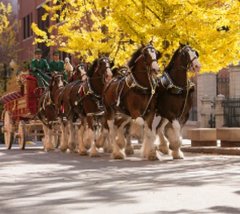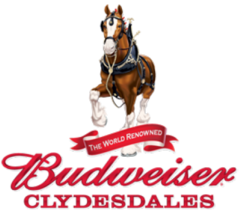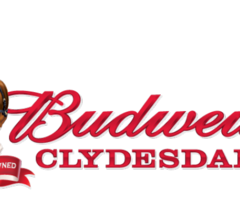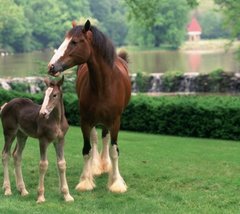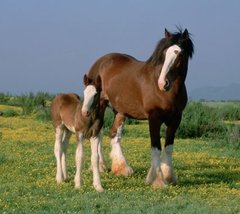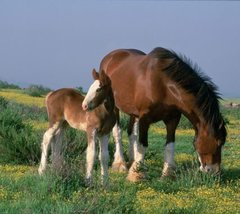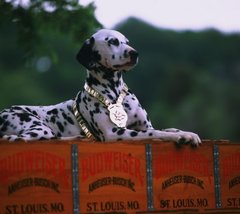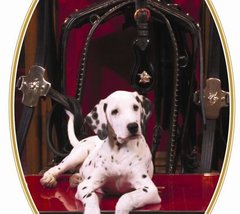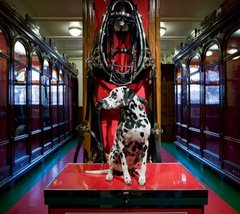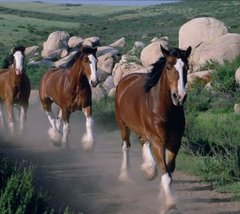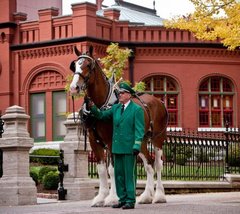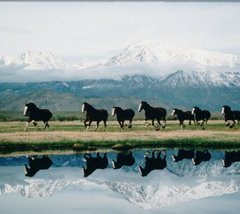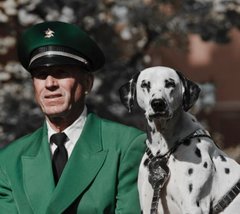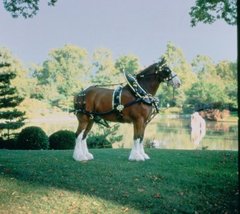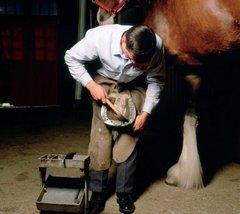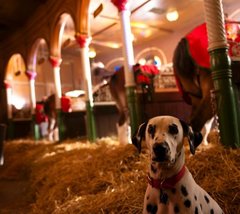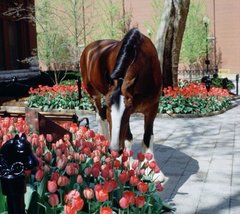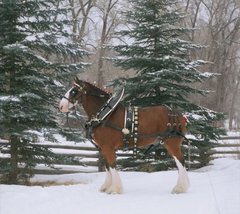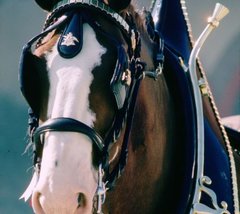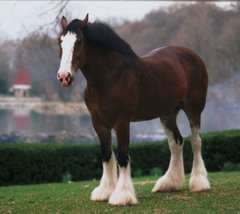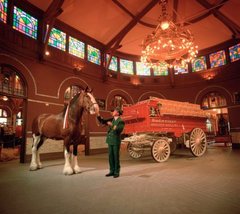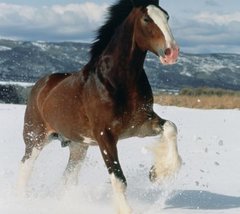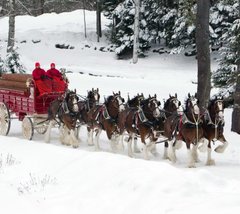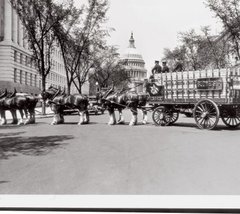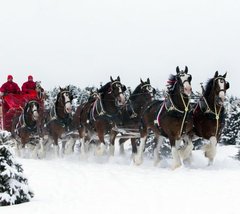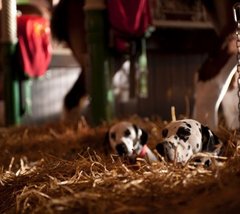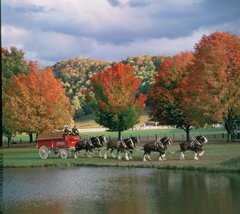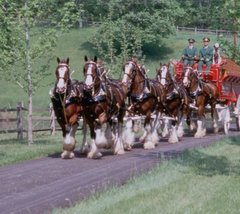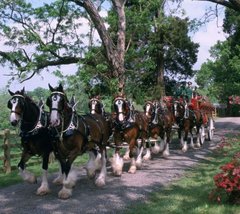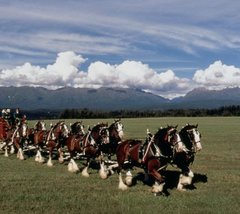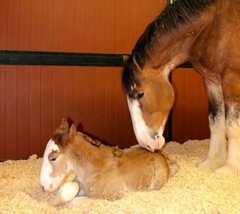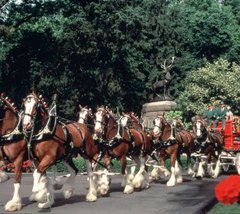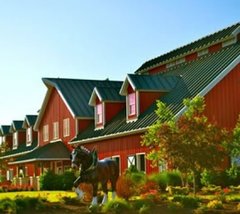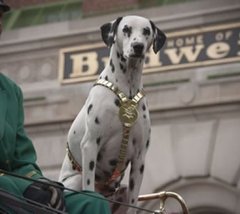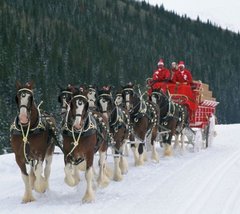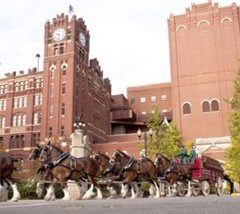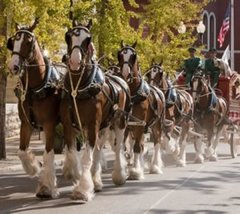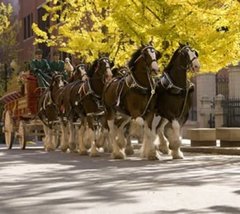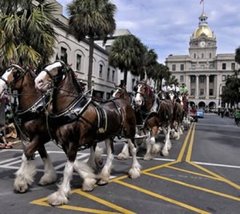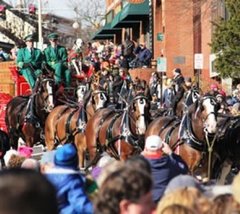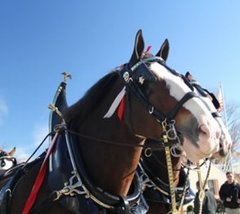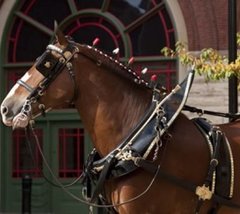Horse-story In the Making:
The Budweiser Clydesdales
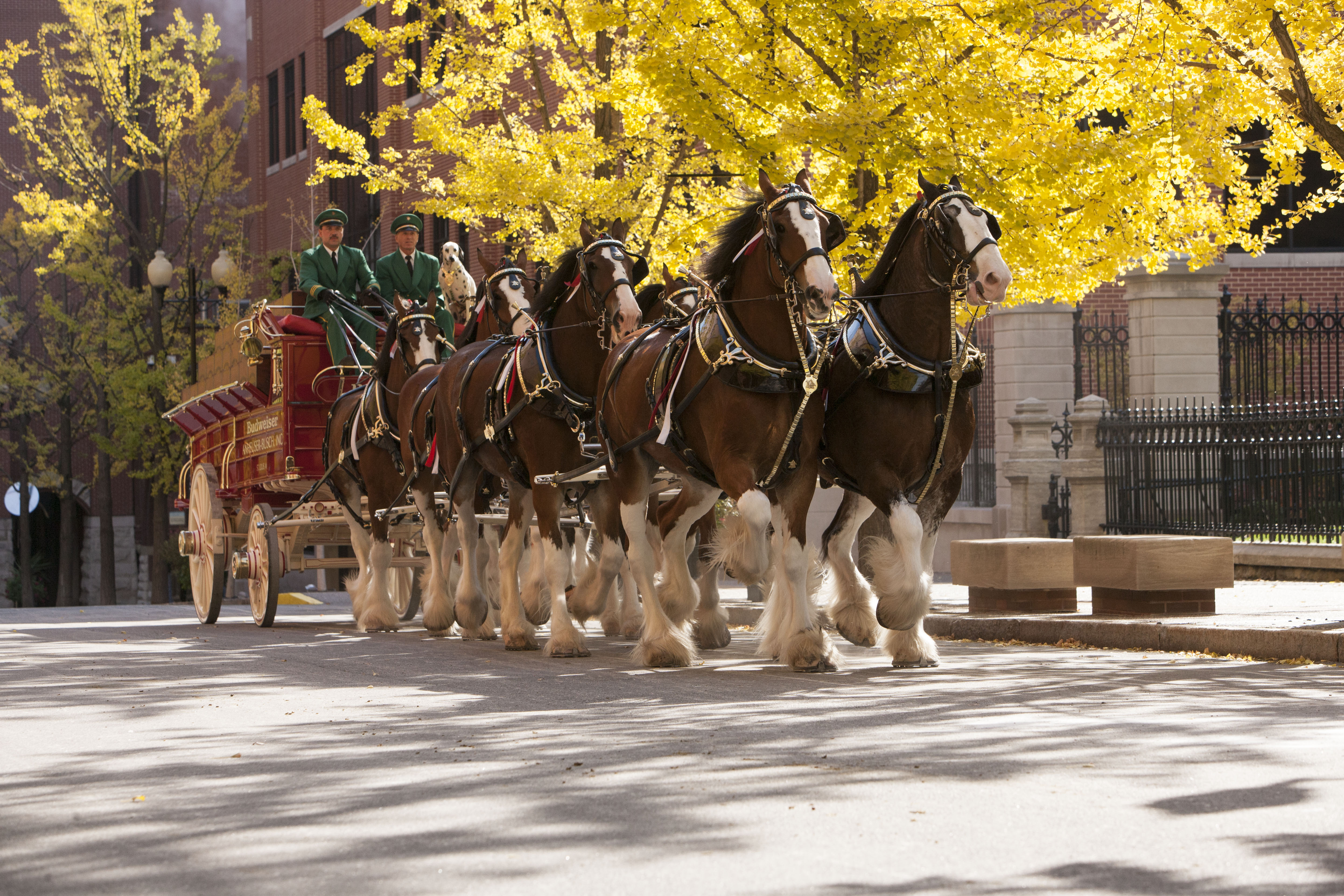
From the Prohibition era to Super Bowl commercials, there is perhaps nothing more iconic in Budweiser’s storied history than its team of Clydesdale horses. More than just a mascot, the Clydesdales have been an integral part of Anheuser-Busch for more than 80 years.
History of the Budweiser Clydesdales
In April 1933, August A. Busch, Jr. and Adolphus Busch III surprised their father, August A. Busch, Sr., with the gift of a six-horse Clydesdale hitch to commemorate the repeal of Prohibition of beer.
Realizing the marketing potential of a horse-drawn beer wagon, the company also arranged to have a second six-horse Clydesdale hitch sent to New York to mark the event. The Clydesdales drew a crowd of thousands on their way to the Empire State Building. After a small ceremony, a case of Budweiser was presented to former Governor Alfred E. Smith in appreciation of his years of service in the fight against Prohibition.
This hitch continued on a tour of New England and the Mid-Atlantic states, thrilling thousands, before stopping in Washington, D.C., in April 1933 to reenact the delivery of one of the first cases of Budweiser to President Franklin Delano Roosevelt.
Shortly after the hitch was first introduced, the six-horse Clydesdale team increased to eight. On March 30, 1950, in commemoration of the opening of the Anheuser-Busch Newark Brewery, a Dalmatian was introduced as the Budweiser Clydesdales’ mascot. Now, a Dalmatian travels with each of the Clydesdale hitches.
The Clydesdales Today
Today, the Budweiser Clydesdales continue to be an enduring symbol of the brewer’s heritage, tradition and commitment to quality, making hundreds of appearances across the country each year.
To properly prepare the Clydesdales for their appearances, a team of dedicated handlers oversees their care. Expert groomers travel on the road with the hitch at least 10 months out of the year. Another team oversees their diet; each hitch horse will consume as much as 20 to 25 quarts of whole grains, minerals and vitamins, 50 to 60 pounds of hay, and up to 30 gallons of water on a warm day.
When it comes time to travel to an appearance, 10 horses; the famous red, white, and gold beer wagon; and other essential equipment are transported in three 50-foot tractor-trailers. Cameras mounted in the trailers are connected to monitors in the cabs that enable the drivers to keep a watchful eye on their precious cargo during transport. Air-cushioned suspension and thick rubber flooring in the trailers ease the rigors of traveling. The team stops each night at local stables so the “gentle giants” can rest.
The team also travels with hitch drivers, who endure a lengthy training process before they assume the prestigious role of a Budweiser Clydesdale Hitch Driver. Driving the combined 12 tons of wagon and horses requires expert skill and physical strength. The 40 pounds of lines held by the driver plus the tension of the horses pulling creates a weight of more than 75 pounds.
Presently, the Budweiser Clydesdales reside at the Anheuser-Busch breweries in St. Louis for public viewing. Visitors can also see the Clydesdales up-close at Warm Springs Ranch, the premier Budweiser Clydesdales breeding establishment in Boonville, Missouri. Both attractions are open seasonally.
When they’re not making appearances around the country, the Budweiser Clydesdales also continue to be marketing stalwarts for Anheuser-Busch. They first appeared in the Super Bowl in 1975, and have since appeared in countless Super Bowl commercials for the company.
Did you know?
- Each of the Clydesdales’ handcrafted harnesses and collars weigh approximately 130 pounds.
- The Budweiser Clydesdales are given short names, such as Duke, Mark and Bud, to make it easier for the driver to give commands to the horses during a performance.
- Budweiser Clydesdales’ horseshoes measure more than 20 inches from end to end and weigh about 5 pounds.
- Dalmatians were known as coach dogs because they ran between the wheels of coaches or carriages and were companions to the horses. Since the 1950s, Dalmatians have traveled with the Budweiser Clydesdales hitch, perched atop the wagon proudly seated next to the driver.
- The turn-of-the-century beer wagons have been meticulously restored and are kept in excellent condition. The wagons are equipped with two braking systems: a hydraulic pedal device that slows the vehicle for turns and downhill descents, and a hand-brake that locks the rear wheels when the wagon is at a halt.
Press Contacts
Media@anheuser-busch.com is a single point of contact for journalists. If you are a member of the press and have an exclusively news-related inquiry, please direct it to this address. For other questions or requests, please click here.
Media
